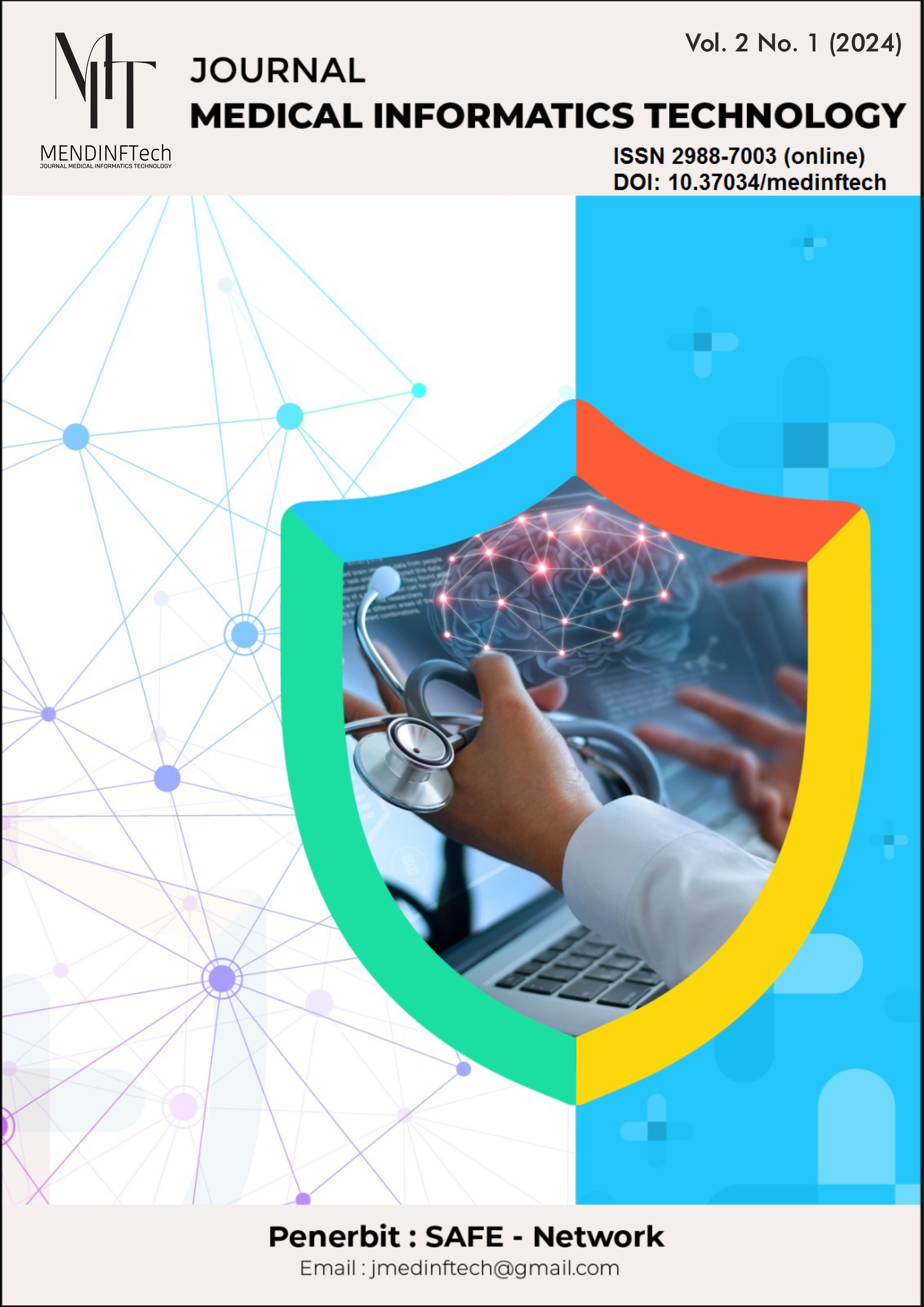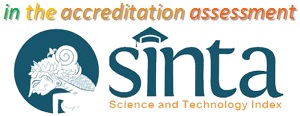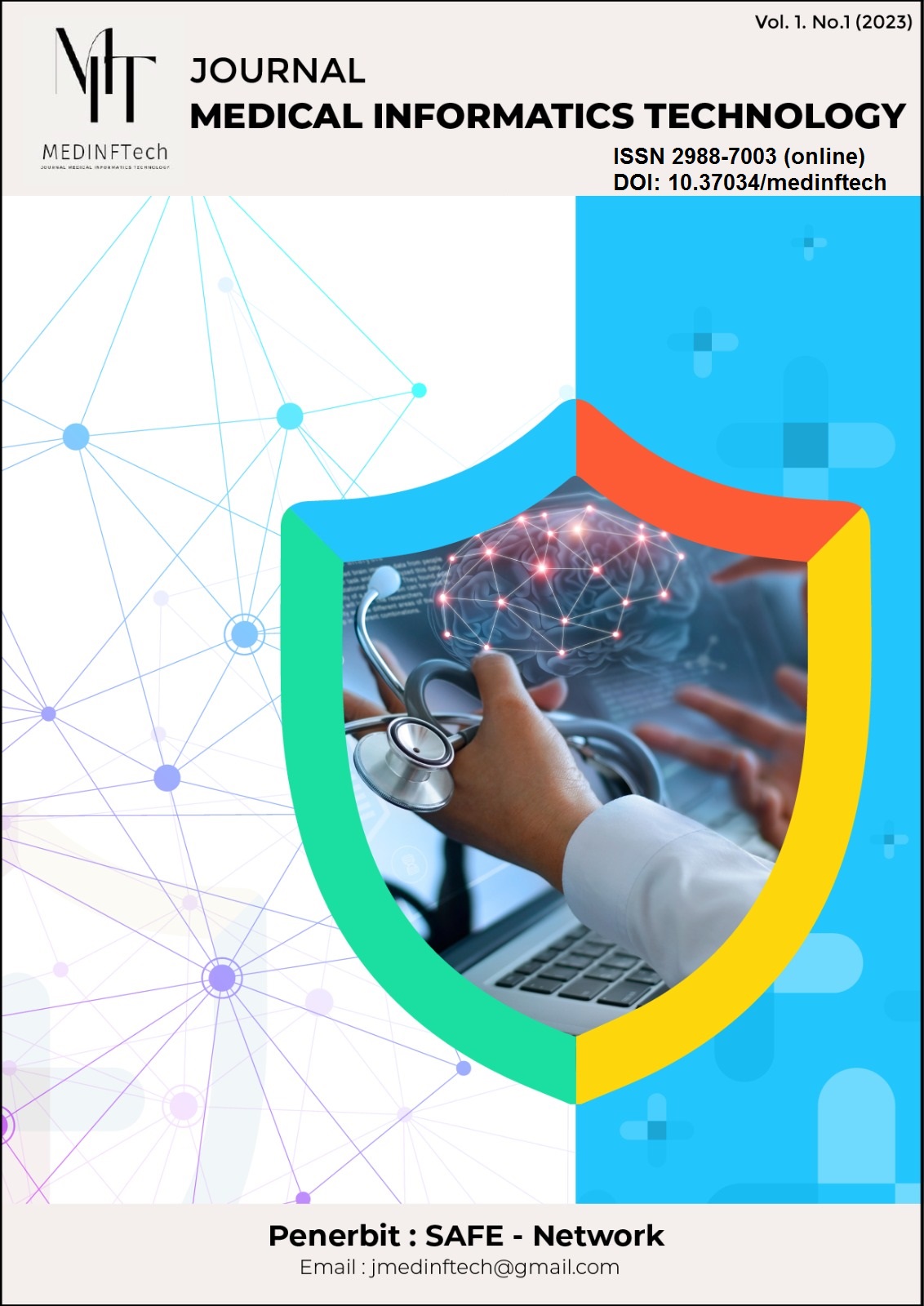Efficient Skin Lesion Detection using YOLOv9 Network
DOI:
https://doi.org/10.37034/medinftech.v2i1.30Keywords:
Class-wise Analysis, Deep Learning, Dermatological Diagnosis, Skin Lesion Detection, YOLOv9 NetworkAbstract
Skin lesion detection plays a crucial role in dermatological diagnosis and treatment. In this study, we propose an efficient approach for skin lesion detection using the YOLOv9 network. Leveraging state-of-the-art deep learning techniques, our model demonstrates robust performance in accurately identifying various skin lesion types, including acne, atopic dermatitis, keratosis pilaris, leprosy, psoriasis, and wart. We conducted comprehensive experiments using a curated dataset comprising 2721 training images, 288 validation images, and 145 test images. The model was trained and evaluated based on standard metrics such as Precision, Recall, and mean Average Precision (mAP). Our results indicate promising detection accuracy, with an overall Precision of 60.5%, Recall of 86.0%, and an mAP of 81.4%. Class-wise analysis reveals varying levels of performance across different disease classes, highlighting the model's proficiency in detecting common dermatological conditions such as acne and wart lesions. Furthermore, we provide insights into potential challenges and limitations, including dataset size and class imbalance, and discuss avenues for future research to address these issues. Our study contributes to the advancement of AI-driven solutions for dermatological diagnosis and underscores the efficacy of the YOLOv9 network in skin lesion detection
Downloads
References
F. A. Mphande, Skin Disorders in Vulnerable Populations: Causes, Impacts and Challenges. Singapore: Springer, 2020. doi: 10.1007/978-981-15-3879-7.
P. Choudhary, J. Singhai, and J. S. Yadav, “Skin lesion detection based on deep neural networks,” Chemometrics and Intelligent Laboratory Systems, vol. 230, p. 104659, Nov. 2022, doi: 10.1016/j.chemolab.2022.104659.
K. A. Ogudo, R. Surendran, and O. Ibrahim Khalaf, “Optimal Artificial Intelligence Based Automated Skin Lesion Detection and Classification Model,” Computer Systems Science and Engineering, vol. 44, no. 1, pp. 693–707, 2023, doi: 10.32604/csse.2023.024154.
D. U. E. Saputri, N. Khasanah, F. Aziz, and T. Hidayat, “Enhancing Skin Cancer Classification Using Optimized InceptionV3 Model,” Journal Medical Informatics Technology, pp. 65–69, Sep. 2023, doi: 10.37034/medinftech.v1i3.14.
S. Voigtlaender et al., “Artificial intelligence in neurology: opportunities, challenges, and policy implications,” J Neurol, Feb. 2024, doi: 10.1007/s00415-024-12220-8.
A. Nazir and Mohd. A. Wani, “You Only Look Once - Object Detection Models: A Review,” in 2023 10th International Conference on Computing for Sustainable Global Development (INDIACom), Mar. 2023, pp. 1088–1095. Accessed: Mar. 20, 2024. [Online]. Available: https://ieeexplore.ieee.org/abstract/document/10112271
A. Vijayakumar and S. Vairavasundaram, “YOLO-based Object Detection Models: A Review and its Applications,” Multimed Tools Appl, Mar. 2024, doi: 10.1007/s11042-024-18872-y.
F. Aziz, F. Ernawan, M. Fakhreldin, and P. W. Adi, “YOLO Network-Based for Detection of Rice Leaf Disease,” in 2023 International Conference on Information Technology Research and Innovation (ICITRI), Aug. 2023, pp. 65–69. doi: 10.1109/ICITRI59340.2023.10249843.
C.-Y. Wang, I.-H. Yeh, and H.-Y. M. Liao, “YOLOv9: Learning What You Want to Learn Using Programmable Gradient Information.” arXiv, Feb. 29, 2024. doi: 10.48550/arXiv.2402.13616.
P. Hermosilla, R. Soto, E. Vega, C. Suazo, and J. Ponce, “Skin Cancer Detection and Classification Using Neural Network Algorithms: A Systematic Review,” Diagnostics, vol. 14, no. 4, Art. no. 4, Jan. 2024, doi: 10.3390/diagnostics14040454.
H.-S. Chang, C.-Y. Wang, R. R. Wang, G. Chou, and H.-Y. M. Liao, “YOLOR-Based Multi-Task Learning.” arXiv, Sep. 28, 2023. doi: 10.48550/arXiv.2309.16921.
C.-Y. Wang, H.-Y. M. Liao, and I.-H. Yeh, “Designing Network Design Strategies Through Gradient Path Analysis.” arXiv, Nov. 09, 2022. doi: 10.48550/arXiv.2211.04800.
M. University, “CS Thesis Dataset HMS Dataset,” Roboflow Universe. Roboflow, Oct. 2023. [Online]. Available: https://universe.roboflow.com/mapua-university-n07py/cs-thesis-dataset-hms
W. Gouda, N. U. Sama, G. Al-Waakid, M. Humayun, and N. Z. Jhanjhi, “Detection of Skin Cancer Based on Skin Lesion Images Using Deep Learning,” Healthcare, vol. 10, no. 7, p. 1183, Jun. 2022, doi: 10.3390/healthcare10071183.
X. He, Y. Wang, S. Zhao, and C. Yao, “Deep metric attention learning for skin lesion classification in dermoscopy images,” Complex & Intelligent Systems, vol. 8, no. 2, pp. 1487–1504, Jan. 2022, doi: 10.1007/s40747-021-00587-4.









